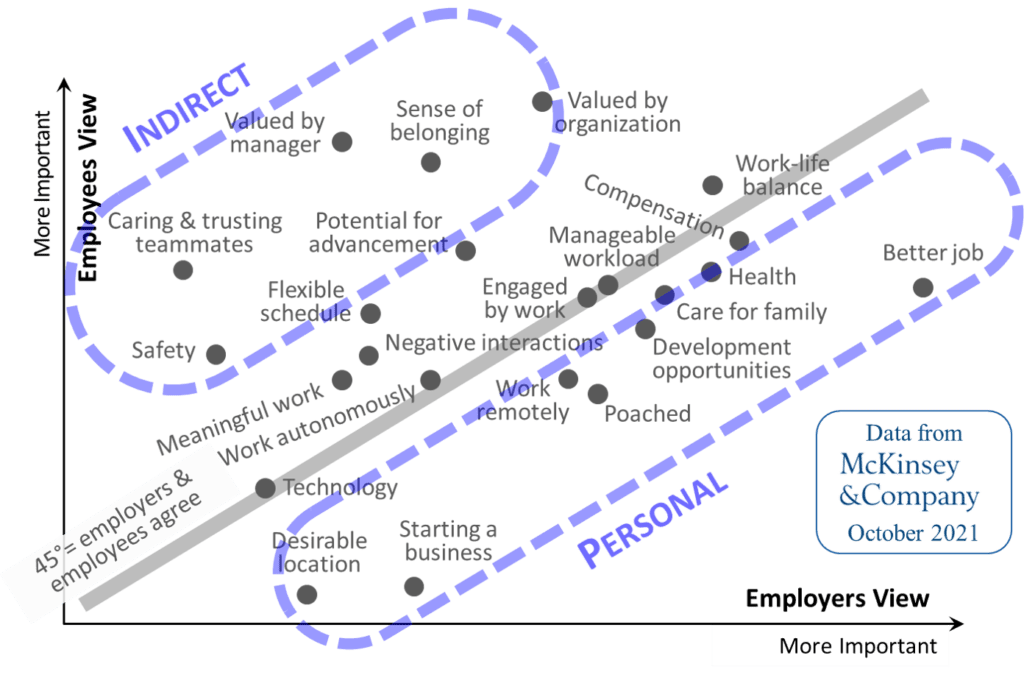By Richard Thayer, William Zybach, and Sally Parker, Syngineering Solutions
Several of our friends and relatives have left their jobs over the past few months – many of them with no new position to move into. They just walked away.
This seems to be happening everywhere – but why? To help answer this, McKinsey & Company conducted surveys comparing employees’ stated reasons for leaving against their employers’ perceptions.

As you examine the graphic (above), you will see that many of the resulting data points confirm traditional assumptions about the primacy of compensation and workloads.
Just around and above the gray line labeled 45º are several items where the responses of employees and employers match. These items mostly relate to areas over which employers and their managers have direct control: e.g., workloads, schedules, and advancement.
However, if we “look under the hood” of this McKinsey data, we begin to discern two key blind spots. The band within the dashed oval below the light gray line illustrates the first blind spot. Almost without exception, employers think that these “personal” issues are much more important than they really are to employees. This may be a convenient interpretation and rationalization, since it relieves employers of the need to change anything; after all, it’s all personal choice.
The band within the dashed oval at the top of the diagram is the second and even more enlightening blind spot. Being valued and belonging are typically not considered important by executives, and yet these are the top reasons employees leave! These issues can be remedied, but executives have only indirect control over them, and can act only if they recognize them as priority root causes.
For those of us at Syngineering Solutions, this data illustrates two key messages: 1) the power and value of real-time data in today’s volatile world, and perhaps even more importantly, 2) the need to involve employees in interpreting these data and make critical design decisions based on it. Our own sensing suggests that the employer-employee gap is widest between senior executives and younger generations who are not vested in existing hierarchical “power-over” paradigms their leaders have grown up under.
The big question: how can you effectively build an attractive workplace if you don’t even know what’s important to employees? This is such an important concept that we have embodied it as one of our principles for effective agile organization design:
“Co-Creation: Effective design emerges from the wisdom of those who are within the system.“
Bringing these people together not only leverages their knowledge – it creates conditions where they can generate magical innovations that couldn’t have been created individually. The desired result lets different generations collaborate, even if they’re speaking from places of different values and expectations.
In all, we have developed five such principles. Taken together, these principles guide practitioners on how to use a five-stage agile design cycle to build agility into the seven components of all organizations. If you’d like to learn more, visit our website and/or send us a message.
Or, even better, register for our next public course …

